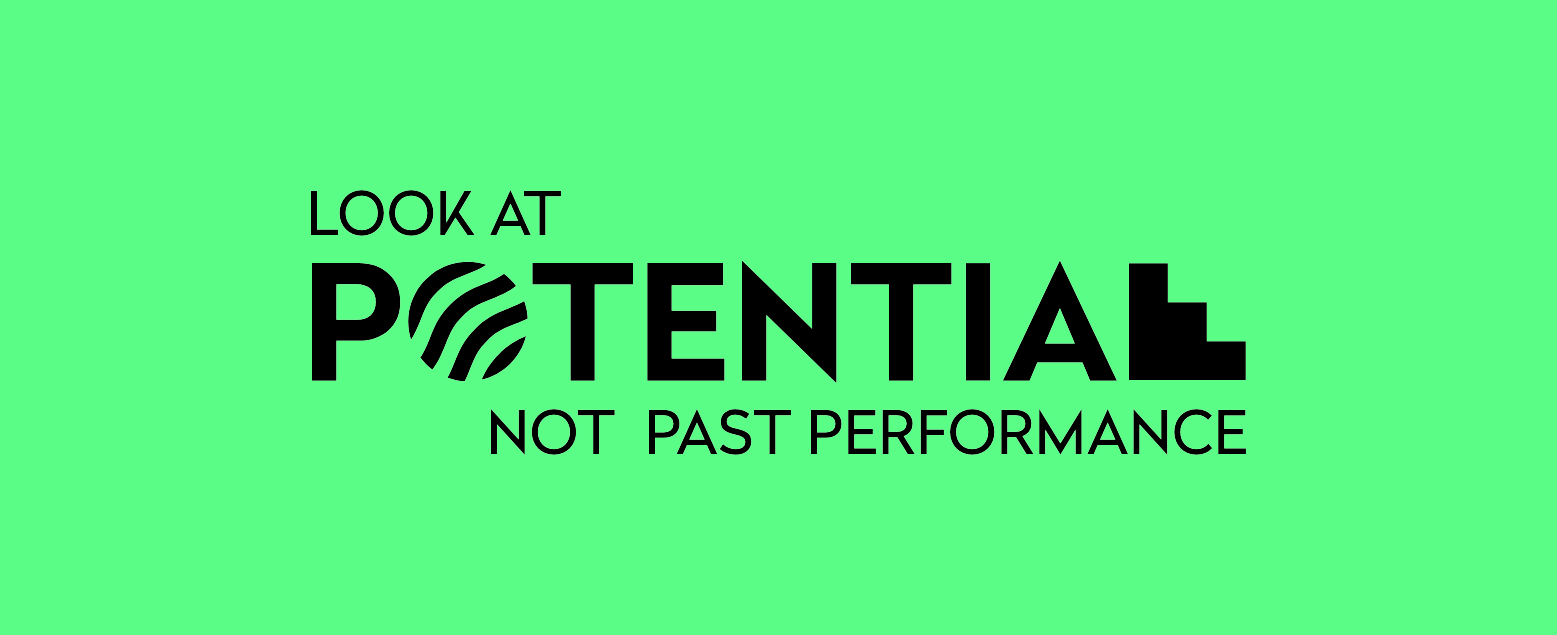How to identify the right high potentials for your business
Think about the worst job you had. When you felt like just another underappreciated cog, working towards someone else’s cause. Drained of all motivation by the time you clocked out and went home to moan about it to your partner or friends. Now think about a job you love(d), where you feel (felt) valued and invested in. Think about how that second environment and culture fires (fired) you up and makes (made) you feel like a high potential…
Here’s the problem with trying to measure someone’s entire future based on their past: you can’t possibly know what’s coming. Especially if a lot of existing factors and variables are going to change too. Elements such as working environment, employee demands, desired leadership skills, company culture, learning and development paths (all of which either already are or should be evolving inside of every set of walls). It’s a sure-fire way to underestimate, undervalue and underserve your people.
So how do you identify high potentials?
How do you unleash that potential in all its glory?
HR teams are far more embedded in their organisation now, more so than ever in the past. But I’ll be honest – I think that still needs to increase. I think that they need to start looking more at potential, rather than just at past performance, which a lot of organisations I work with still do. We all need to look ahead, not backwards. And HR should be at the helm of this, helping organisations to prepare for the future.
Let me explain…
Are your processes stifling your creativity?
Pre-Covid, HR departments were held back by traditional models focused on maximising and measuring productivity, while lowering costs of labour and supporting adoption of new technology. Yes, there will be robots in the future and that’s definitely exciting, but the future is actually all about people.
McKinsey recently summed up the 3 characteristics that all future-ready companies share:
They know what they are and what they stand for
They operate with a fixation on speed and simplicity
They grow by scaling up their ability to learn and innovate
How many can your business tick right now? HR can help to kickstart this transformation by facilitating positive change in these three areas. But if that’s a bit of a scary list rather than one that elicits pride, you might benefit from partnering with a leadership development consultant like myself. That’s where it all starts. That future requires a new kind of talent strategy, with new training, for new types of leaders and other high potentials.
Bringing such a transformational strategy to life means that HR must transform itself first, from a pumpkin, focused on administration, mitigating risk and compliance, to the carriage that’s capable of and dedicated to taking every piece of talent to the ball as its best-developed self – and breaking new ground en route.
Let’s get personal
Attracting, developing and retaining talent means getting playful, experimenting, paving the way, engaging on deeper and more personal levels, as your whole self, to their whole selves. Everything you need from employees is what you need to offer to them.
That means that HR teams need to identify high potentials through far more rigorous assessments and objective processes. Anything that is bias-free, of course, is hugely important. It’s no good putting people in boxes or assigning them to one type of personality or saying they’re ‘an introvert or an extrovert’.
We are all different things in different moods, at different times, under different circumstances, under different leaders, and with the right development and encouragement.
We’ve all worked with (or perhaps are) someone who seems generally quiet but pipes up every now and again with great ideas that give a glimpse of what they might really be capable of. With the right role, responsibilities, culture, nurturing and training, that person could become an organisation’s greatest asset and leader.
The biggest tragedy? So many of those high potential talent assets go entire careers or stints at organisations without anyone realising that. That’s a loss for the company, the talent, and all the other people around them who might have been inspired or learned from their journey.
Think about the organisational support theory (OST) – every employee should feel that their organisation values them and their contributions and cares about their well-being. Things have changed since this theory was coined in the 80s, but the core idea is more relevant than ever. It should be at the centre of your HiPo and talent strategy, and how HR should think about their role too. Every modern company needs to understand that investing in the wellbeing of people is the key to increasing revenue.
Your talent cycle needs to cover every stage
Potential shouldn't just be considered in the development sphere. Potential should be considered in the recruitment phase, the early stages of talents’ time with an employer, in development, and when moving into a new role internally or externally, so you've got a clear talent cycle for each employee.
When you meet someone, they’re not interviewing to fill and sit in a box; they’re interviewing to become an asset and a source of innovation and return on investment for your business. To bring something new and unique to the table. People are unique, that’s their biggest strength. They’re trusting you with their future, investing in yours, so you too must invest in theirs.
If I was in an HR team looking after 2,000 people in an enterprise, before asking, “Who’s high potential talent?” and looking at past performance, I’d be asking, “Who is actually interested in advancing their career with us?” “Who here really does live the values of our organisation on a day-to-day basis, and understands our vision?” “Who is interested in taking a role abroad or moving to a different part of the organisation to learn and grow?” Those are the people to look at and explore as high potentials.
What every business needs from its HR team now
Changes in the way we work mean that people have much less exposure to their peers, their leaders and their direct reports. That means HR will need to be much more purpose-specific, targeted, and objective in any assessment processes that they design and deliver.
What are the critical skills for HR leadership today?
A human-centred approach and a focus on empathetic, active listening
A clear understanding of how to build a leadership development framework and how to nurture a culture of learning.
A focus on creating a positive and caring experience for employees, growing trust and mutual commitment between people and the business.
In fact, over 98% of CHROs said they were thinking about how HR can shift from mechanistic skill and talent management to becoming the architect of the employee experience and a guiding voice to leadership, in a targeted, more dynamic way.
It’s no longer about, “How can we get what we need from high potentials?” It’s about, “How can we show our employees we care about them?” and, “How can we improve leadership skills to encourage those high potentials to grow?”
That transition is usually much easier with the advice and skills of a leadership and talent development consultant like myself. It can help to soothe departmental concerns over complexity, budget and lack of time. When I partner with HR teams to identify high potential talent and future leaders, I identify the impact that’s needed and the right steps to take. I work with HR to shape internal policies, grow a learning culture, and develop a leadership development framework designed to identify and empower HiPo talent and prepare leaders for change.
Here’s a first step you can take right now
Start think about your high potentials like you think about your customers. Identify their pain points, then work backwards, to craft their development journey.
I can help with that talent strategy design and execution, and with answering questions like:
“How can we provide hidden gems with the resources and learning cultures that will help them to flourish and become even more successful? How is our organisation focusing on diversity and inclusion? How will we spread agile decision-making to roles across the organisation? What efforts can we make to understand individual needs before we make our mind up about their potential?”
I think assessment and development centres that are customised for specific target audiences and for future capabilities are a great way to understand high potential talent in even more detail.
Ask yourself, “What rigorous assessments can we use to strip bias and reduce ambiguity, and gain greater understanding of their abilities in the future? Think about the role that psychometrics, 360-degree surveys, and other real-time feedback gathering tools can play. It’s about opening minds and hearts – real talk, with real multi-dimensional people. It’s about reinforcing human factor, being adaptable and flexible in the moment, customising approaches in those moments, and being able to pivot the conversation to pull out the right pieces of information and nuances.
What’s more, conducting these assessments and using these tools just once per year isn’t enough anymore. With the rate of evolution and need for learning and development to be constant, that insight and feedback loop needs to be constant too.
Conclusion: how to identify the right high potentials for your business
HR is no longer in the belly of the ship – it’s right up by the helm, holding the periscope. HR therefore needs to unleash its own creativity and potential, with a new strategy for identifying and developing the high potentials that will get you the business where it wants to be.
The key to that is looking at potential, not past performance.
That means far more purpose-specific, targeted, and rigorous leadership assessments and objective processes, a talent cycle that covers every stage, a leadership development framework that empowers and supports high potential talent, and a learning culture designed to help those HiPos to flourish and become even more successful.
What do you think? Are you still trying to wrap your head around this transition and how to find the right high potentials for you? Is it worth asking for help from a leadership development consultant like me? Get in touch to talk details.
Written by Michael
Michael Mauro is the founder of a forward-thinking organisation specialising in leadership, HR and employee development. With over a decade of global experience, Michael has become a leading voice on topics such as culture, inclusion, wellbeing, and the future of leadership.






